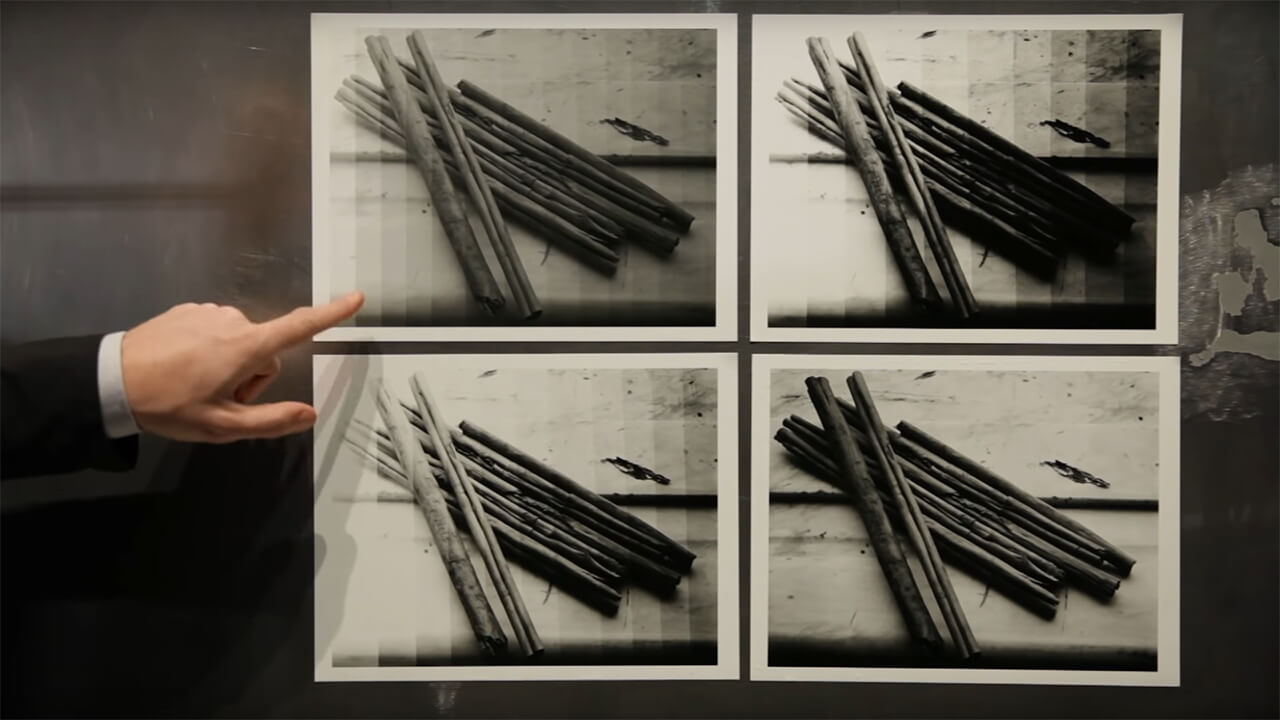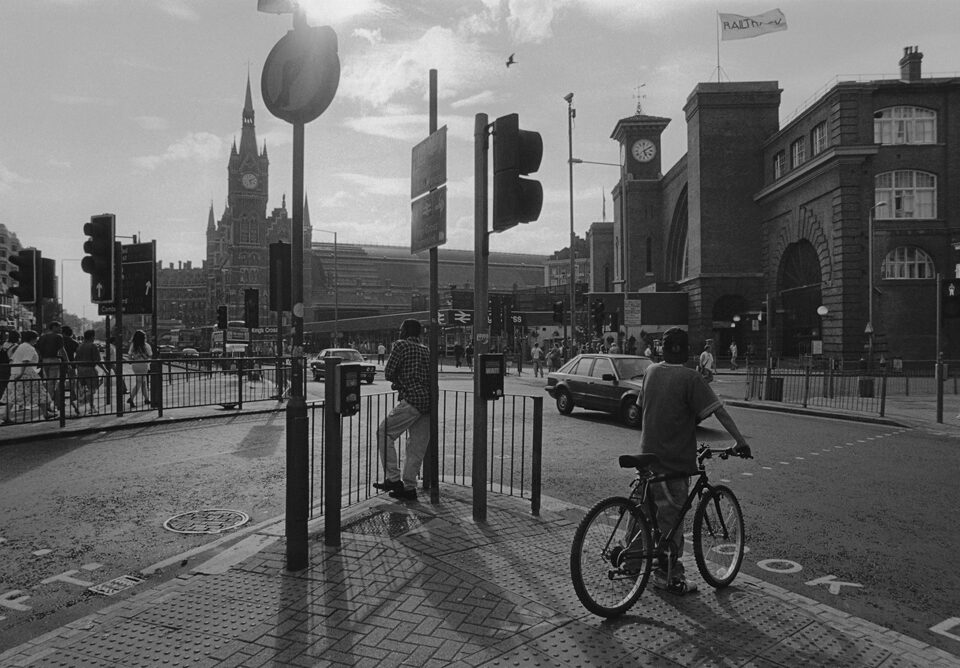
Che cos’è il contrasto?
1 Maggio 2021La stampa SplitGrade è sbagliata!
24 Febbraio 2023SplitGrade is popular procedure to adapt the printing contrast to the contrast of the negative. It is a simple, always the same, 3 step way to do it, a sort of ritual that promises to make contrast adjustment simple and straightforward.
I’ve been teaching darkroom techniques for more than two decades now and I well know how difficult can be to understand what is contrast and how contrast adjustment works, so I fully understand the success of this procedure, BUT… it is flawed. I’m sorry. It is.
We shall start understanding how contrast adjustment is made and before that we must get rid of a false myth. The false myth is that the paper has two emulsions, one with high contrast and sensitive to blue light (the magenta filter blocks the green light and the blue passes trough) and another one sensitive to green light (the yellow filter blocks the blue light and the green passes trough) and that contrast adjustment is made by splitting the exposure in variable proportions into this two different emulsions or layers. According to these assumptions contrast adjustment is done either by varying two different exposures with each color (Splitgrade) or by using filters that let pass different amounts of green and blue light. Well it doesn’t work that way at all. It has never. This is totally made up!
So how is contrast adjusted?
MultiGrade (MG) papers have an emulsion made of differently color sensitized silver salts, in modern papers there are generally 3 of those. We can refer to this as different layers or emulsions for simplicity of thoughts, but the emulsion is just one containing the differently colour sensitized salts. These “layers” have the same speed in blue light and different speed in green light, they all have the same contrast (!!!) and the contrast is low (!!!).
If we use blue light (magenta filter) all the “layers” get the same exposure and the density of each sums up, thus to get maximum density or “blacks” we need only a partial exposure of each “layer” and a reduced amount of light. This reduced amount of light is not enough to pass trough the denser parts of a negative in quantities able to produce some density on the paper, thus producing an effect of higher contrast.
When we use green light (yellow filter) the “layers” have different speed, so to get maximum density (blacks) we need to give one single layer enough exposure to make it. To reach maximum density a lot more light will be needed, so this higher amount of light will pass trough the denser parts of a negative in quaintities enough to get some density on the paper, thus producing a lower contrast effect.
Many have noticed that when doing SplitGrade there is no precise control of the highlights and they get darker than expected or chosen in the first test strip. That is precisely the issue with that procedure, and it is unavoidable. It is unavoidable because that depends on how the paper works. Think of it!
In the procedure of SplitGrade we do the first exposure in green light (00 or 0 filter), so we expose one layer more than the others, then we chose a proper exposure for the highlights, expose one sheet with that, we change filter and make a test strip with grade 5, chose the exposure for the shadows. Then we make the print with this two different contrasts and exposure. All should go as expected, we are promised to get both highlights and shadows right, but this doesn’t happen.
It doesn’t happen because the second exposure is in blue light, and it goes on all the layers and it will unavoidably add up to the highlights: they get a second exposure!
This is the reason why this procedure if flawed, it cannot properly work, because the paper doesn’t work like the false myth says.
Can we fix this issue? To some extent yes, but never precisely. In “Way Beyond Monochrome” it is suggested that the exposure with the lower contrast shall be a bit reduced, prior to making the grade 5 teststrip. The question that has no answer is how much we shall reduce it.
It happens that the lower the contrast is on a negative the higher is the influence of the second exposure on the highlights, so the amount of the reduction that shall be made on the first exposure is variable!
Some noticed that the softer the negative the more imprecise SplitGrade becomes if the first exposure is make with 00 filter, so they suggest to do the first test strip with grade 5 when the negatives are soft. Does this solve the problem? It does not. It simply moves the issue on the shadows, they will be darker than expected because they will get additional exposure in green light anyway.
If we have hard contrasty negatives the inherent mistake of Spligrade can be minor, in fact many have learnt that it works better with hard negatives. Similarly many have noticed that with very soft negatives they can reduce the error by testing grade 5 first. But why shall we use SplitGrade when we are good or lucky and have good negatives? Why use a procedure that unavoidably cannot give what it promises?
But the biggest issue is that SplitGrade brings back in the process the guesswork that the test strip was supposed to eliminate! We make test strips to chose, precisely, the exposure, not to have a base for guesswork, don’t we?
A good news: there is a simple way to adjust contrast precisely, we do not need SplitGrade.


